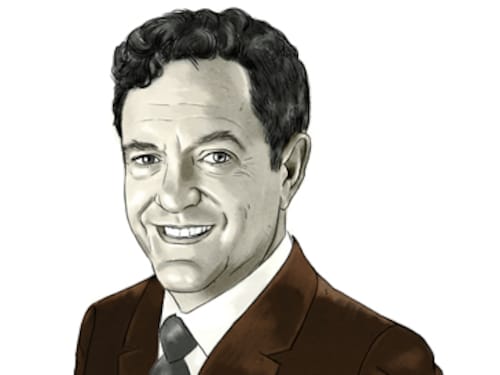Rich Karlgaard: Future billionaires
Tomorrow's wealthy will be those who use ingenuity and rapidly evolving technology to transform traditional industries to serve earth's growing population


The rule of 72 is a handy way to peg the years it will take for an investment to double. Take 72 and divide it by the compound interest rate. Earn 8 percent and you’ll double your money every nine years. Close enough, anyway. In 1944, 72 years ago, the US gross domestic product was $225 billion (in current dollars). Today, it’s approximately $18 trillion. That represents an annual compound growth rate of 2.9 percent.
If the US economy had grown just one percentage point more per year, the rule of 72 says the size would be double of what it is today. (Actually, a bit more, when you run the numbers: $37.1 trillion.)
Question: How many more billionaires would the US have in an economy twice as big? How much more investment capital? How much more opportunity for entrepreneurs? With a $37 trillion economy, spread over 320 million people, there’d be no government debt or looming social security crisis, state and city pensions would be fully funded, and the country’s infrastructure would be spectacular. All this would’ve been possible had the political class paid just a wee bit more attention to economic growth over those 72 years. A pox on them for not doing so.
Age of the common billionaire
But I digress. Let’s move to the world economy. Today its size is approximately $80 trillion. Last year was a so-so year for growth, but still the GWP (gross world product) grew at 3.4 percent. That rate of growth predicts a $258 trillion global economy by 2050. Think about that: An economy more than three times as large as today’s. Let’s assume a lower rate of growth, say 3 percent. That’s still $145 trillion in additional annual production, which will create many thousands of new billionaires. The Forbes billionaires issue in 2050 will be as thick as a big city’s phone book. Where should tomorrow’s billionaires seek their fortunes? Because trends are your friends, keep an eye on two megatrends.
Global population. It’s getting bigger, richer, more urban and older. Global population today is 7.3 billion. The UN predicts 9.7 billion by 2050. But pay special attention to the subtrends within the megatrends. Take the growth of the global middle class. Today that population is around 2 billion. By 2050, this number could, more or less, double. When people move from poverty to the middle class, they want and, therefore, buy things. What do they want? Sanitation. Air-conditioning. Modern housing. Higher-protein diets. The ability to travel. Trillions of dollars will be made serving these needs.
Urban population will grow from 4 billion to 6.3 billion by 2050. Trillions of dollars will be made in the housing and transportation industries.
The world’s older population (people over 65) will grow from today’s 600 million to 1.5 billion or so by 2050. Trillions of dollars will be made in a range of new drugs, medical procedures and health services aimed at meeting the needs of seniors.
Technology acceleration. In tech circles, there’s a robust debate about whether Moore’s Law, which estimates the rate of microchip evolution, is slowing. In a narrow sense it is. The distance between circuits on a chip is already down to the width of several atoms. Cram the circuits much closer and electrons will start jumping the circuits and behave unpredictably. But will technology’s exponential progress then stop?
The futurist Ray Kurzweil thinks not. He points
out that the Moore’s Law rate of progress (where digital technology’s capabilities double every 18 to 24 months) predates the silicon era, which began in 1958 with Fairchild Semiconductor’s integrated circuit. Kurzweil claims the exponential era began in the 1890s. He says it will continue after silicon semiconductors have run their course (by the early 2020s), thanks to quantum computing and other already proven concepts.
Kurzweil could be wrong, but that’s not a wager I’d make. It’s never been smart to bet against the rate of technological change. That’s like betting against human ingenuity. Tomorrow’s billionaires will be those who use ingenuity and rapidly evolving technology to transform traditional industries—agriculture, energy, manufacturing, transportation, construction, finance, health care—to serve earth’s growing population. Think bigger, richer, more urban and older. Then get there first with the right technology. You might make a future Forbes billionaires issue.
Rich Karlgaard is the publisher at Forbes
First Published: Mar 23, 2016, 06:40
Subscribe Now